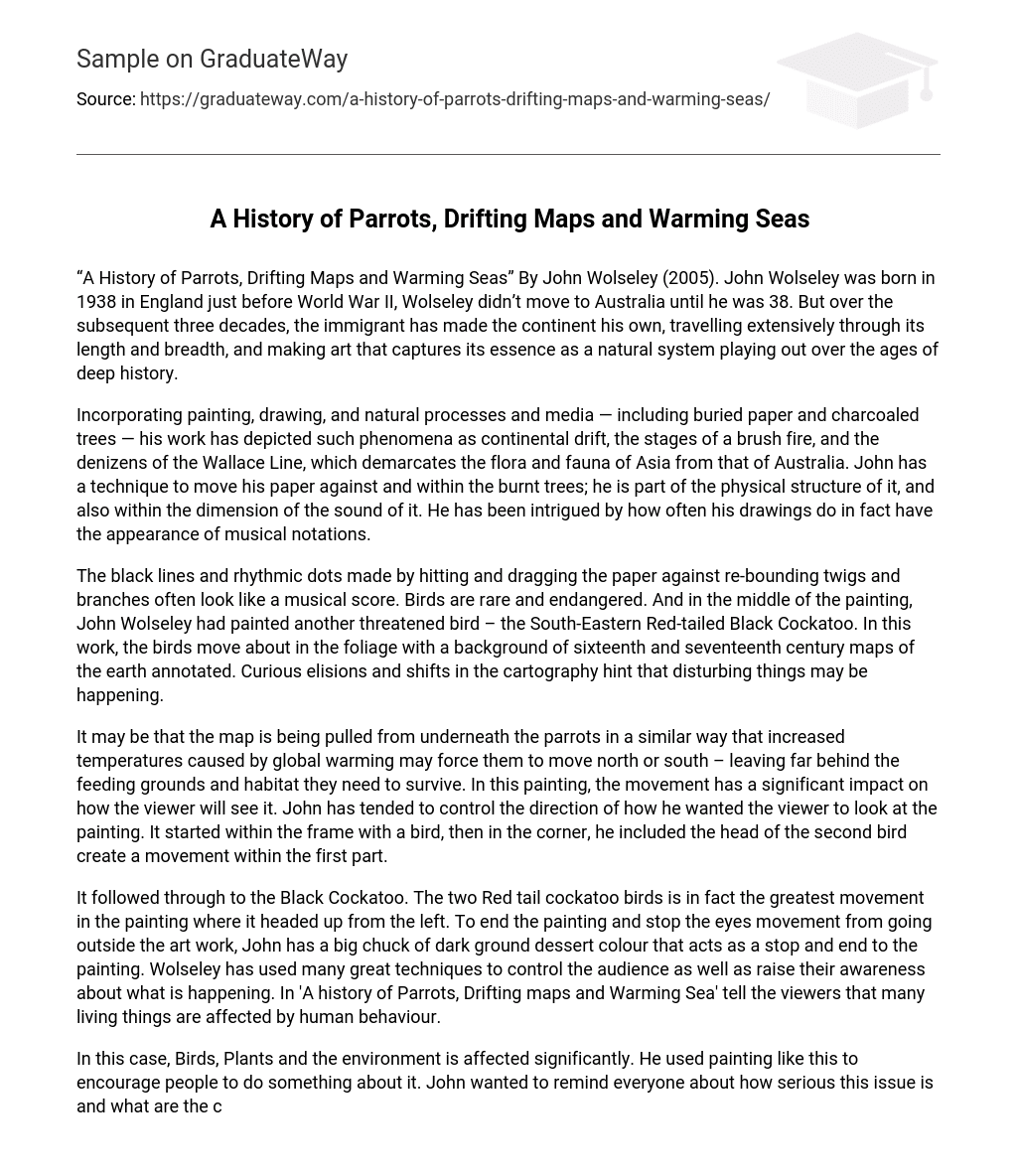By John Wolseley (2005). John Wolseley was born in 1938 in England just before World War II, Wolseley didn’t move to Australia until he was 38. But over the subsequent three decades, the immigrant has made the continent his own, travelling extensively through its length and breadth, and making art that captures its essence as a natural system playing out over the ages of deep history.
Incorporating painting, drawing, and natural processes and media — including buried paper and charcoaled trees — his work has depicted such phenomena as continental drift, the stages of a brush fire, and the denizens of the Wallace Line, which demarcates the flora and fauna of Asia from that of Australia. John has a technique to move his paper against and within the burnt trees; he is part of the physical structure of it, and also within the dimension of the sound of it. He has been intrigued by how often his drawings do in fact have the appearance of musical notations.
The black lines and rhythmic dots made by hitting and dragging the paper against re-bounding twigs and branches often look like a musical score. Birds are rare and endangered. And in the middle of the painting, John Wolseley had painted another threatened bird – the South-Eastern Red-tailed Black Cockatoo. In this work, the birds move about in the foliage with a background of sixteenth and seventeenth century maps of the earth annotated. Curious elisions and shifts in the cartography hint that disturbing things may be happening.
It may be that the map is being pulled from underneath the parrots in a similar way that increased temperatures caused by global warming may force them to move north or south – leaving far behind the feeding grounds and habitat they need to survive. In this painting, the movement has a significant impact on how the viewer will see it. John has tended to control the direction of how he wanted the viewer to look at the painting. It started within the frame with a bird, then in the corner, he included the head of the second bird create a movement within the first part.
It followed through to the Black Cockatoo. The two Red tail cockatoo birds is in fact the greatest movement in the painting where it headed up from the left. To end the painting and stop the eyes movement from going outside the art work, John has a big chuck of dark ground dessert colour that acts as a stop and end to the painting. Wolseley has used many great techniques to control the audience as well as raise their awareness about what is happening. In ‘A history of Parrots, Drifting maps and Warming Sea’ tell the viewers that many living things are affected by human behaviour. In this case, Birds, Plants and the environment is affected significantly. He used painting like this to encourage people to do something about it. John wanted to remind everyone about how serious this issue is and what are the consequences of this problem.
Bibliography
- Biennal, S. (2012, January 23). Gleaning 11: John Wolseley. Retrieved February 2013, from Moira Roth’s Gleanings: http://moirarothsgleanings. tumblr. com/post/16334896772/gleanings-11-john-wolseley Biennale, S. (2012, January 23).
- Gleaning 11: John Wolseley. Retrieved February 2013, from Moira Roth’s Gleaning: http://moirarothsgleanings. umblr. com/post/16334896772/gleanings-11-john-wolseley Johnson, P. (2013). John Wolseley.
- Retrieved February 2013, from UWA Publishing: http://uwap. uwa. edu. au/books-and-authors/author/john-wolseley/ Mason, G. (2009, August 10).
- Banner Image: John Wolseley. Retrieved February 2013, from Sanseverything: http://sanseverything. wordpress. com/2009/08/10/banner-image-john-wolseley/ Unknown. (2004, September). John Wolseley Timeline.
- Retrieved February 2013, from Roslyn Oxley 9 Gallery: http://www. roslynoxley9. com. au/artists/1/John_Wolseley/profile/





